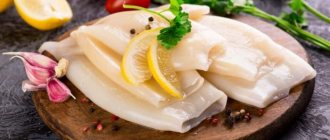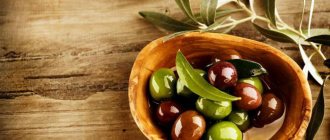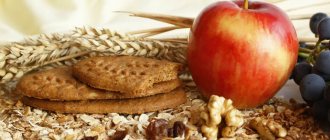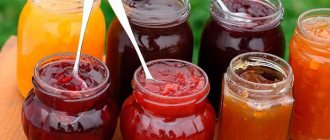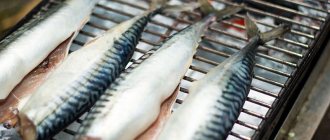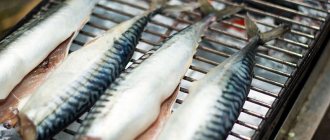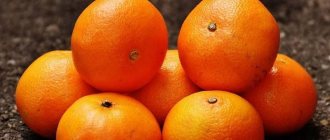Cranberry varieties
Cranberries, or “northern lemons,” have been cultivated since the first half of the 19th century. At this time, special attention was paid to large-fruited varieties. Since the end of the last century, breeders began to develop new varieties of bog cranberries. Currently, there are more than 20 varieties of cranberries.
Let's name the most common of them:
- Ben Lear is the earliest known cranberry variety. The berries, a dark burgundy color with a sweet and sour taste, reach full ripeness at the end of August.
– a mid-season variety with purple fruits shaped like a heart.
Sazonovskaya- Scarlet Reserve is a late-ripening variety with large but sour-tasting fruits.
- Franklin is a mid-season variety that produces intense red berries. The advantage of the fruits of this variety is their long shelf life. They stay fresh for up to a month.
- Severyanka is a variety of Russian selection with large berries. Its advantage is its high resistance to frost.
Application
The harvested fruits can be eaten fresh, but most of the harvest is processed. Cranberries are used to make jam, marmalade, syrup, marmalade, marshmallows, and pie filling. Many different drinks are also prepared from berries: juice, fruit drink, compote, kvass, tincture and liqueur, fruit drinks. For the winter, the berries are prepared for future use - they are soaked, frozen, dried and ground with sugar. Cranberries are added to salads and sauerkraut.
Market Analytics
- Global cosmetics market 2021: an unprecedented test for the global cosmetics industry
- Top 10 Cosmetic Research and Development of 2021
- 2020 in the beauty industry – innovation without borders
Convenient search for beauty salons on our website
Beauty salons in Moscow Beauty salons in St. Petersburg Beauty salons in Ekaterinburg Beauty salons in Novosibirsk
Latest blog posts on our website
- Naturecream / Properties of the “Sunny” oil itself
- Naturecream / “Sugar” wrinkles - or what glycation can do
- Naturecream / Esterified oils
- Naturecream / Arnica - the magical plant of alchemists
- Naturecream / Tremella Extract - Snow Mushroom Detox for Skin
- Prostye-sovety / How to visually enlarge your lips with makeup
- Naturecream / Apricot kernel oil for face
- Naturecream / MATRIXYL3000 - the best skin elasticity stimulator
- Naturecream / SPF in Natural Oils
- Naturecream / Geranium (Pelargonium) oil for skin health and beauty
Latest forum topics on our website
- Natalya / How to properly make a gelatin mask?
- Mrs._Smith / Badly sunburned! What to do?((
- Ice / Is it necessary to combine fitness classes with a diet?
- Antonova / What can be used for hair loss?
- Radio operatorKat / Who was on a protein diet?
Other articles in this section
| Shepherdia silver Shepherdia silver is a small thorny shrub with characteristic leaves, which are covered on both sides with silvery fluff, from which the plant got its name. Due to its decorative properties, silver shepherdia is widely used in gardening, as well as for creating hedges. The plant tolerates gas pollution well and is suitable for landscaping urban areas. The fruits of the plant - bright red berries with a rather bitter taste - ripen in early autumn and can hang on the branches without falling until spring. The first frosts significantly reduce the amount of bitterness in the fruits, and they become much tastier. The berries of silver shepherdia are similar to sea buckthorn fruits, for which it is often called red sea buckthorn, but they are much tastier. |
| Sea buckthorn Sea buckthorn is a shrub or small tree, reaching a height of 3 meters, the branches are covered with small thorns and densely located fruits on short stalks. The fruits of the plant are small oval berries of yellow-orange color with a refreshing sweet and sour taste and a pleasant aroma, vaguely reminiscent of pineapple. |
| Cloudberry Cloudberry is a herbaceous plant and reaches a height of about 35 cm, found in peat bogs, swampy forests and tundra. During the flowering period in mid-summer, one snow-white flower blooms on each stem. By the beginning of autumn, the first harvest appears - quite large, juicy, sweet, amber-colored berries with a subtle amazing aroma. When unripe, cloudberry berries are red in color and resemble raspberries in appearance. Despite the fact that cloudberries are common in the polar-Arctic region, they do not like snow and do not tolerate frost well. Locals call cloudberries marsh amber, marsh guard, northern orange and moss currant. |
| Mango Delicious in taste, mangoes grow quite large in size. The fruits are oval in shape, smooth and thin skin of yellow or reddish-green color. The large and hard seed is surrounded by aromatic and juicy yellow flesh, which, depending on the variety, can be soft or fibrous. |
| Red currant Currently, there are 65 varieties of red currant. Unlike the black one, its bushes are taller and more compressed in width. Red currants are winter-hardy berry crops, but love light. It blooms in May-June with pale green flowers, the fruits ripen in mid-summer. Sour, small, bright red berries are collected in drooping clusters, on which they hold firmly, without falling off for a long time. |
| Irga Irga is a low shrub, undemanding to growing conditions and characterized by high frost resistance. The fruits collected in clusters ripen in mid-summer; these are round berries of violet-blue or dark purple color with a bluish waxy coating. The fruits of the serviceberry cannot be called a delicacy, but its pleasant fresh-sweet taste with a slight sourness pleases residents of the northern regions of Russia every summer. |
| Black elderberry Elderberry is a perennial woody plant from the honeysuckle family and has the appearance of a shrub or small tree 3-7 m high. Elderberry grows mainly in central Russia. In early summer, fragrant cream or yellowish-white flowers bloom on the branches. By the beginning of autumn, the fruits ripen - small black-purple berries with a sweetish-sour taste. Being a medicinal plant, black elderberry has found its main use in medicine. |
| Black currant Black currant is a lush shrub from the gooseberry family, which has more than 200 varieties. It blooms in May-June with lilac or pinkish-gray flowers collected in drooping clusters. The fruits ripen in the second half of summer; they are a round berry of black or bluish-violet color, juicy, with a characteristic fragrant odor, multi-seeded, and sweet and sour in taste. The leaves and fruits of the plant are used in folk medicine and cooking. |
| Grapefruit The fragrant grapefruit weighs from 200 to 500 g and is the result of crossing an orange and a pomelo. Different varieties have different peel colors, which can be yellow, orange or pink. Its color affects the color of the pulp and its sweetness: the more saturated pink the peel is, the sweeter the fruit itself. |
| Dogwood Dogwood is a large fruiting shrub that bears small oblong berries. Outside, the fruits are covered with a smooth skin of all shades of red: light, bright, dark and deep burgundy, almost purple, under which there is juicy sweet and sour pulp and a hard inedible pit. |
Nutritional value, calorie content and composition of cranberries
Cranberries have a very low calorie content even among berries. 100 grams of cranberries contain only 28 kcal, and a glass - just over 40. And this is not surprising, because cranberries are almost 90% water and contain a very small amount of carbohydrates.
Nutritional value of 100 g cranberries:
- 88.9 g water.
- 3.7 g carbohydrates.
- 0.5 g protein.
- 0.2 g fat.
Composition of cranberries (per 100 g):
Vitamins:
- 15 mg vitamin C (ascorbic acid).
- 0.3 mg vitamin PP (nicotinic acid).
- 1 mcg vitamin B9 (folic acid).
- 0.02 mg vitamin B1 (thiamine).
- 1 mg vitamin E (tocopherol).
- 0.08 mg vitamin B6 (pyridoxine).
- 0.02 mg vitamin B2 (riboflavin).
Minerals:
- 119 mg potassium.
- 0.6 mg iron.
- 14 mg calcium.
- 11 mg phosphorus.
- 15 mg magnesium.
- 1 mg sodium.
What are the calorie content of fresh, dried and frozen cranberries?
In addition to their bright scarlet color and sour taste, fresh cranberries differ from many other berries in their high vitamin content and low calorie content. How many of them the cranberry will reward depends on the method of its processing. The energy value of these berries (per 100 g) is as follows:
- fresh berries – 26-28 kcal;
- dried (dried) – 308 kcal;
- frozen – 17 kcal.
Thus, for those who decide to lose weight, a natural and frozen product is more suitable, but dried cranberries, whose calorie content is 11 times higher than fresh berries, are not suitable at all! Drying robs the gift of bogs and gardens of its dietary abilities and transforms it from a low-calorie to a super-nutritious food.
The benefits and harms of cranberries
Beneficial properties of cranberries:
- Cranberries are capable of removing heavy metal salts and radioactive substances from the body. In addition, it prevents the development of cancer. For this reason, cranberries are especially recommended for residents of environmentally disadvantaged regions and people employed in hazardous industries.
- Berries have a positive effect on the cardiovascular system. They strengthen the walls of blood vessels, giving them elasticity, which prevents the formation of blood clots.
- Cranberry juice helps remove kidney stones.
- Compresses made from crushed cranberries relieve headaches.
- Grated berries are used to treat abrasions and burns, and cranberry juice is used for dermatitis and fungal diseases.
Harm of cranberries
- Cranberries can cause severe allergies, so people prone to them should consume the berry with great caution.
- Cranberries are not recommended for those with high acidity and peptic ulcers. For these diseases, cranberries can only be consumed in the form of juice diluted with water.
- Due to their high acid content, fresh berries should not be eaten on an empty stomach. They are best used as dessert or processed.
General description of the plant
Cranberries are a group of flowering perennial plants of the genus Vaccinium of the Ericaceae family, represented by low-growing evergreen shrubs with bright red berries. It is not difficult to distinguish them from other representatives of the genus (lingonberries, redberries, blueberries) due to several features:
- long (up to 60 cm) liana-like stems become lignified, spread along the ground and take root at the nodes;
- small leathery leaves have a glossy shine and are colored bluish underneath;
- the flowers have a high (up to 5 cm) peduncle, pink color and look drooping due to the petals bent back.
The Latin name of these plants - Oxycoccos - is formed by combining two Greek words: "sour" and "sphere", noting the characteristic taste of the fruit. Fact! Local names in many languages reflect the similarity of the flower on the stem with the head of a crane: English “cranberry” (“crane-berry”), German “kranebeere”, Russian “crane”, Belarusian “cranes”.
In temperate climatic zones of the northern hemisphere, the plant is found in high-moor, sphagnum and peat bogs, as well as on marshy banks of rivers and lakes. It begins to bloom in May-June, the fruits are collected from late August to October. There are four known types of cranberries:
- ordinary or marsh - found in Europe, Siberia, and the Far East;
- small-fruited - common in Central Asia and Europe;
- large-fruited or American - grows in North America;
- southern mountain (Vaccinium redfruit) - grows in the mountains in the southeastern United States and East Asia, representing a shrub up to 1.5 m tall.
Due to their high nutritional value - the berries are a source of vitamins and are widely used in the food industry and cosmetology - the plant (large-fruited cranberry) has been cultivated in the USA since the 30s of the 19th century and in the territories of the countries of the former USSR (Russia, Belarus, Lithuania, Latvia) since the 70s of the twentieth century.
In 2021, in Russia, in the Arkhangelsk region, they began to create the world's first bog cranberry plantation.
Cranberry in the diet of pregnant and lactating women, children, diabetics and athletes
Cranberries are extremely beneficial for pregnant women It has a positive effect on the genitourinary system, eliminates swelling and improves immunity. In addition, berries and cranberry juice improve blood circulation in the uterus, which is undoubtedly beneficial for the fetus. Nursing mothers should refrain from eating cranberries, as they can cause severe allergies in the baby.
It is also not recommended to give cranberries in any form to children under three years of age.
And for diabetics . Firstly, it contains a minimal amount of glucose. Secondly, it normalizes hormonal levels thanks to ursolic acid. You can eat a glass of cranberries a day, taking into account bread units.
Cranberries are no less useful for athletes . It will supply the body with the necessary number of vitamins. If you need to lose weight before a competition, cranberry, as a dietary product, is ideally suited as a component of dietary nutrition.
Benefit
The berry is highly valued because it has a healing effect on the body, because it is characterized by:
- carry out deintoxication, removing heavy metals and radioactive elements;
- normalize the functioning of the stomach and intestines, treat the initial stage of pancreatitis, gastritis, with low acidity;
- help eliminate fever, reduce high temperature;
- destroy pathogenic microorganisms and bacteria, effectively used as a natural antibiotic;
- reduce the risk of stone formation in the gallbladder and kidneys;
- use in the treatment of inflammatory processes in the genitourinary system;
- remove bad cholesterol, improving the firmness and elasticity of vascular tissues;
- influence the functioning of the heart and vascular system, ensuring better metabolism in the heart muscle, due to which the chance that a person will have a heart attack or stroke is significantly reduced;
- remove excess fluid that can accumulate in the body of older people, increasing the risk of hypertension, and also reduce high blood pressure;
- stimulate the immune system, improve health in case of colds and viral diseases;
- fight diseases in the oral cavity, destroying pathogenic microorganisms;
- eliminate vitamin deficiency and anemia, thanks to a unique combination of vitamins and microelements;
- protect the body from aging, protecting tissue cells from the negative effects of free radicals;
- have a calming effect on brain cells, stabilize the body’s nervous system;
- improve vision due to the effects of carotenoids;
- cleanse the skin and eliminate defects such as boils, pimples and acne.
It is extremely useful to drink drinks based on berry juice or crushed fruits; such a healing drink will help cure:
- tonsillitis and cough;
- cystitis;
- oncology, cancer prevention;
- migraine;
- diabetes.
We recommend learning about cranberries for weight loss.
For women
The berry is actively used to improve the appearance of the skin, stimulate hair growth and its healthy condition. The components in cranberries stimulate the normalization of the hormonal levels of the female body, so women experience reduced pain during menstruation.
The fruits of the bush remove toxins, waste, cholesterol, eliminate swelling, promoting weight loss. The aging process slows down somewhat as the elasticity of skin cells increases and wrinkles are smoothed out.
Weight loss is a pressing problem for many women, and eating cranberries can effectively solve it.
For men
The effect of cranberries on the male body lies in the effect of the components of the berry on the state of the vascular system:
- the risk of heart attacks and strokes is reduced;
- blood supply to the genitourinary system improves, potency improves.
Organic acids help eliminate inflammation of the prostate gland, for example, berries are used for the prevention and treatment of prostate adenoma and other diseases, the composition of seminal fluid is qualitatively improved.
However, to achieve the effect of treatment, long-term consumption of berries is necessary.
For children
The product is allowed to be given to children. You can begin your first acquaintance with berries from an early age, after vegetables and fruits have become part of the baby’s daily diet. For example, it is permissible to give cranberry juice to bottle-fed children from 6 months, and to breastfed children from 8 months. However, you should not get too carried away with this product, limiting your intake to 2 times a week in small quantities; the portion can gradually reach 15 g, starting with ½ tsp.
Exceeding the norm can cause an allergic reaction in young children. As for the fresh product, berries are allowed to be included in the diet of children from 3 years of age.
The key elements that predominate in the berries have a strengthening effect on muscle and skeletal tissues and tooth enamel.
Berry drinks are actively used for treatment in children:
- cough;
- ARVI;
- colds;
- strengthening the immune system;
- lack of appetite;
- urinary incontinence;
- enhancing the effect of antibiotics.
Also find out if cranberries are a diuretic.
How to choose, collect, consume and store cranberries?
- Cranberry harvesting begins in mid-October and continues until snow falls. When picking, you can use a plastic hand harvester, but it is better to pick each berry separately.
- Fresh cranberries can be stored in a cool, dry place for up to 10 days, and in the refrigerator for up to two weeks.
- If you rinse freshly picked cranberries with cold water, and then place them in jars and pour cooled boiling water over them, they will be stored in the refrigerator for a whole year.
- If you buy cranberries on the market, then first of all you should pay attention to the appearance of the berries. Fresh berries should be shiny and firm to the touch. In addition, they must be painted in an intense red color. Dried, wrinkled berries with a brownish or faded color cannot be purchased.
- Cranberries can be dried and frozen. Dried cranberries can retain their beneficial properties for three years, frozen ones for a year.
Harm
- Eating berries in significant quantities can negatively affect the functioning and condition of individual organs and systems of the body:
- deterioration of the condition of tooth enamel may occur;
- uncontrolled use can cause allergic manifestations on the skin, in the form of itching or rashes;
- Possible deterioration of health in people with duodenal ulcers and gastritis with high acidity;
- It is possible that bleeding may increase in people while taking medications that reduce blood coagulation.
It is worth remembering that the berries are very sour and their juice can provoke painful conditions even in a healthy person, so taking cranberries on an empty stomach is highly not recommended.
Important! Harm to the body comes from excessive and uncontrolled consumption of the product by people for whom the product is contraindicated or its use should be under the supervision of doctors.
What dishes can be prepared with cranberries?
- Cranberry juice.
- Cranberry jelly.
Cranberry jam.- Cranberry sauce for meat.
- Cranberry syrup.
- Smoothie with cranberries.
- Cranberry marmalade.
- Cranberries in powdered sugar.
- Berry pie with cranberries and cinnamon.
- Cabbage marinated with cranberries.
- Meatballs in cranberry sauce.
- Duck stuffed with apples and cranberries.
- Oatmeal cookies with cranberries.
- Curd cream with cranberries.
Benefits of use
The beneficial properties of the wild northern berry have already been described in detail, however, it is worth talking about the methods of using this medicinal plant in more detail. The most popular use of cranberries is in the form of fruit drinks, juices and compotes; they are also used to make preparations for the winter, preserving jams and preserves.
Frozen cranberry compote
This drink is recommended for colds, inflammatory processes of various origins, and fever. It is a stimulator of the body's defenses, eliminates pathogenic bacteria and inflammatory processes. It is recommended to be taken for pyelonephritis, cystitis as an antibiotic and diuretic drug that has an analgesic effect.
For children, compote can be used when there is no desire to eat, to stimulate appetite, and also as an effective remedy for coughing.
Ingredients:
- frozen cranberries: 1 cup;
- water: 2 l;
- sugar: 150 g.
Recipe:
- The berries are boiled in water with added sugar, which is necessary because cranberries are very acidic in nature. The amount of sweetener can be varied as desired, but the optimal amount is the specified proportion.
- The drink is boiled for 15–20 minutes.
- Then it is cooled before serving, which allows it to develop more of its taste and aroma.
Find out also about the benefits and harms of cranberries grated with sugar.
Morse
This vitamin drink is also very useful. Gynecologists advise preparing it for preventive purposes, as well as as a supportive, non-drug therapy. Similar recommendations can be obtained from gastroenterologists and proctologists, thanks to the powerful influence of cranberry components.
Ingredients:
- frozen berries: 400 g;
- water: 1.5 l;
- sugar: 2-3 tbsp. l.
Technology:
- Defrost the berries in advance ; this can be done by first removing the berries from the freezer and leaving them in the kitchen overnight at room temperature.
- Squeeze juice from berries using a sieve, gauze or juicer. The remaining cake should not be thrown away.
- Pour the resulting juice into a hermetically sealed container and set aside for a while. The shelf life of such a product should not exceed 24 hours.
- To boil water.
- Leave the pan with boiling water off the heat for 4-5 minutes, then add sugar and cake. Mix the added ingredients well with a wooden spatula until the sugar is completely dissolved.
- Cover the container with a lid and leave for half an hour or until the drink has cooled to room temperature. This will allow the drink to brew and acquire a richer taste and aroma.
- Strain to remove cranberry pulp.
- Add berry juice to the resulting liquid and mix well.
Cranberry diet
It is not recommended to have a mono-diet on cranberries, but nutritionists advise carrying out cranberry fasting days. Their goal is to cleanse the body of toxins and excess fluid. Along the way, you can get rid of 1-2 kilograms of excess weight. The maximum duration of the cranberry diet is 3 days. During this time, you should only drink water and cranberry juice diluted with water. The amount of the latter should be 8 glasses. Solid foods are not recommended on this diet. If you feel very hungry, you can eat some fruit. Before starting a fasting diet and after it, you need to limit your intake of fatty and carbohydrate-rich foods.
A more gentle diet option is to include cranberries, cranberry juice and fruit juice in the daily menu, which should consist of low-calorie foods. It must be said that long-term consumption of cranberries with proper nutrition will bring even greater effect than a strict mono-diet. In addition, the first option can seriously affect your health.
Features of the use of cranberries for medicinal purposes
Fresh berries are still more food than medicine, which, moreover, cannot be carried away too much because of the sour taste. To treat internal diseases - acute respiratory infections, inflammation - more often than just cranberries, jelly or fruit juice made from it with the addition of honey is used.
More acidic decoctions, juice, and even fruit pulp are used for external use: in medicinal masks for the face and hands, home remedies for the care of the skin of the hands, body and hair.
No less valuable as a medicinal remedy are the leaves of the plant, which are sold in almost any herbal pharmacy. They contain fewer vitamins, but more useful substances that are resistant to heat treatment, therefore suitable for brewing herbal teas.
Such drinks are not so harmful to the teeth and stomach, and their use helps to cope with heartburn, reduce pain in a sore throat, relieve headaches and shortness of breath, and reduce joint pain.
At the same time, we must not forget that any methods of treating crane grass and its leaves are auxiliary therapy, not primary therapy, and before using them, you should consult a doctor.

